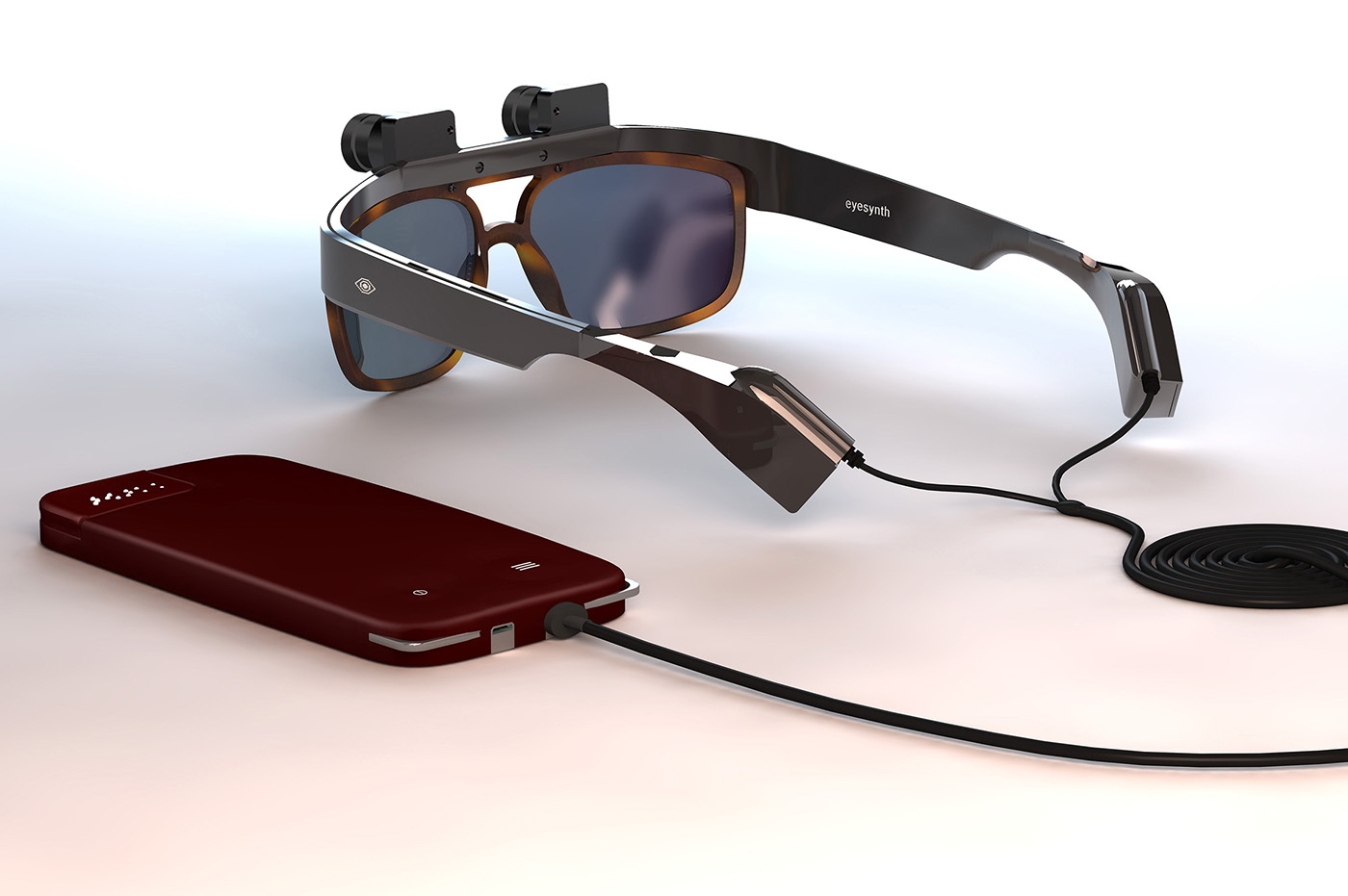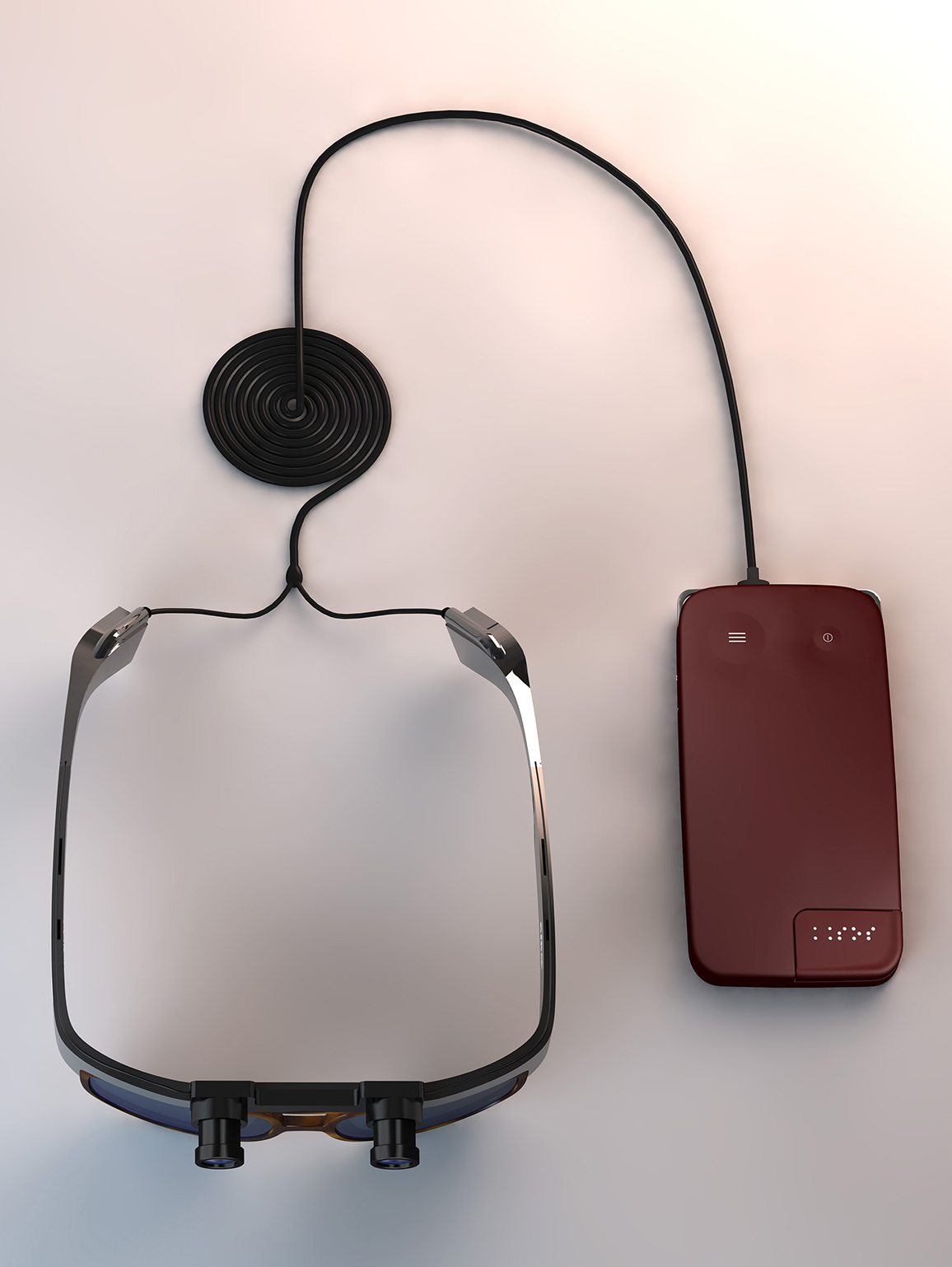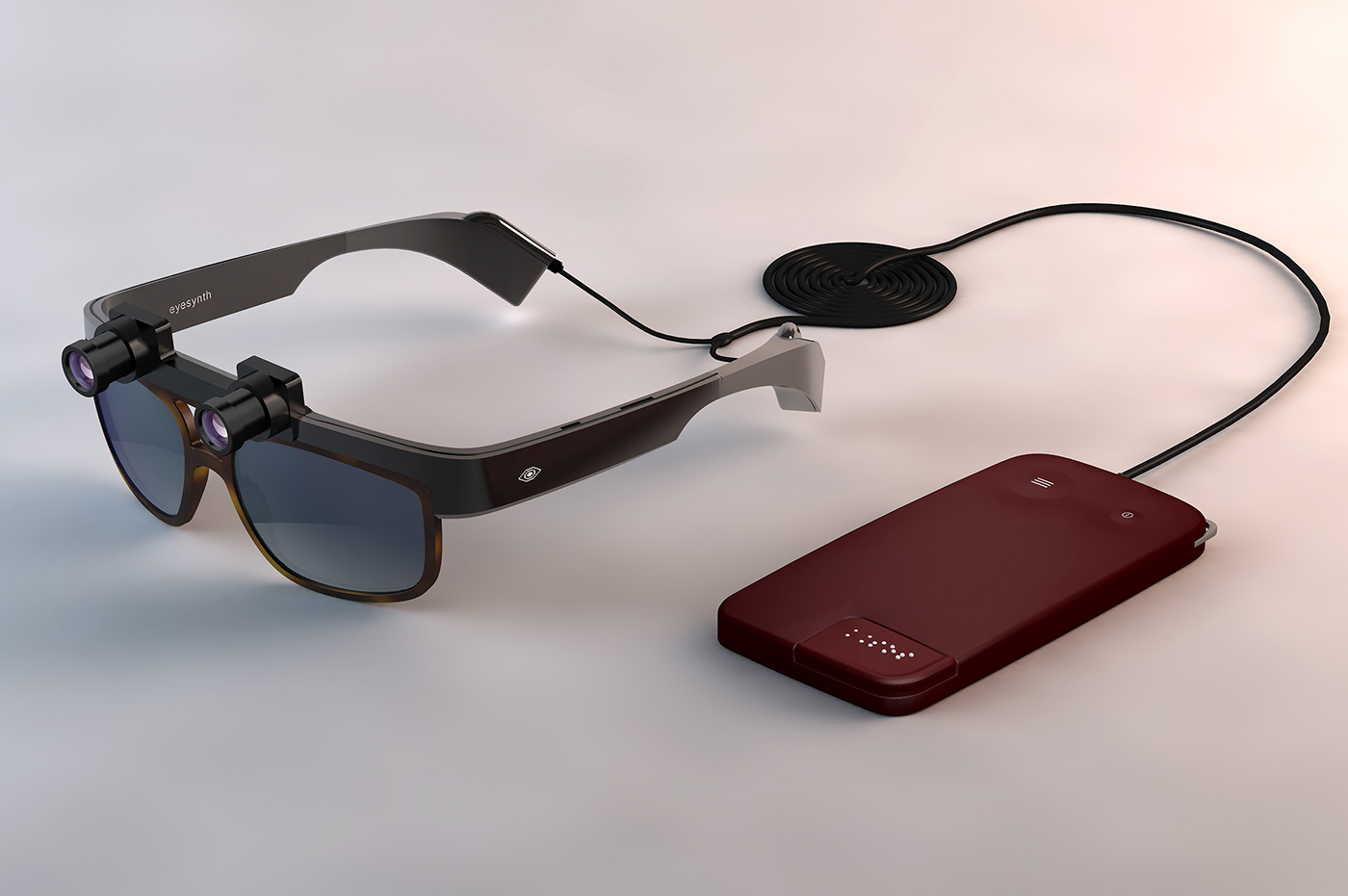
Eyesynth, glasses that make it possible to “see” by hearing
These glasses use an algorithm to convert spatial and visual information into audio that can be understood by blind people
The aesthetics and formal design of these glasses are developed by Alegre Design
Eyesynth is a company created with the aim of developing assistive technologies for people with any kind of sensorial disability.
The WHO (World Health Organization) estimates that around 285 million people in the world are affected by visual impairment. Of these, 39 million, or 0.7% of the world population, are blind, and 246 million have low vision.
The Valencian studio Alegre Design has collaborated in the design of Eyesynth, the first glasses that allow blind people and those with limited sight to ‘see’ through sounds.
Eyesynth uses a 3D camera and a software algorithm to transform spaces and objects into abstract sound that is transmitted via cochlear audio (through the bones of the head) to the brain, which is able to code the sound and interpret information regarding the size, shape and position of nearby objects. Emulating the navigation system used by bats, the glasses send electrical signals to the brain that ‘show’ users the volume and depth of the spaces around them.
Alegre Design is responsible for the exterior design of Eyesynth, which consists of the optical glasses themselves, the technological device located on them and the computer which acts as data processor for the whole system. The glasses have been developed by the company with the same name, based in Castellón and created with the aim of developing assistive technologies for people with sensorial disabilities: Eyesynth.


More information: http://www.alegredesign.es/


